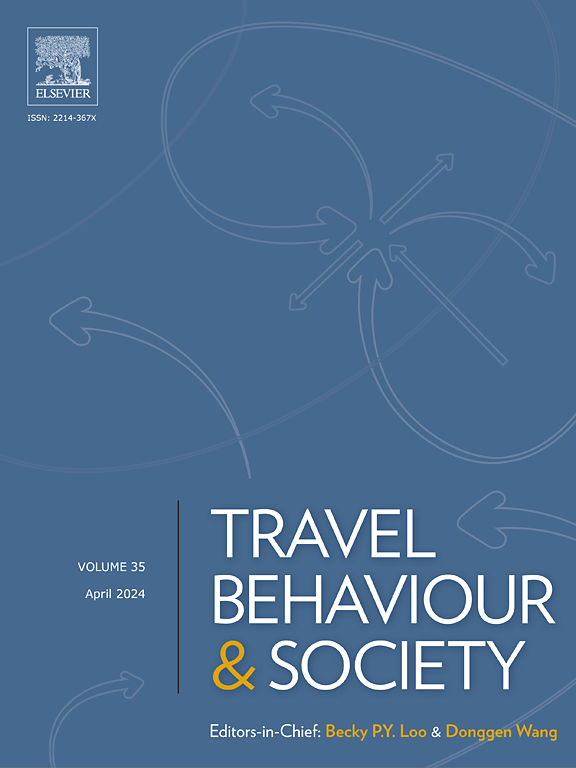How to ensure sufficient access to public transport in rural areas? A comparative analysis of institutional designs for multimodal integration
IF 5.7
2区 工程技术
Q1 TRANSPORTATION
引用次数: 0
Abstract
Integrating traditional public transport services with flexible modes (paratransit and shared mobility) may enhance accessibility in rural areas by efficiently using resources. However, integrating transport modes across spatial scales increases institutional complexity, requiring fit institutional designs to achieve sufficient modal availability. This paper explores how institutional designs for multimodal integration can ensure sufficient modal availability by comparing modes in three case studies in the Netherlands. Based on a literature review and expert workshops (n = 16), a design framework was developed comprising six parameters for intermodal comparison: initiative, decision-making level, service requirements, network size, risk allocation, and contract flexibility. Data collection proceeded through focus group discussions and interactive surveys with public servants (n = 23) to inventory the institutional designs in the cases. Results indicate a ‘laissez-faire’ approach to the institutional design of shared mobility, while public transport and paratransit institutional designs are more interventionist. Overall, rural cases show greater risks born by authorities combined with decentralised decision-making. Design alternatives for multimodal integration vary by transport mode. Risk allocation and contract flexibility are crucial for consistent public transport. Paratransit contracts should be more flexible to coordinate with demand-responsive services. Considerable network size and government risk, supported by centralised decision-making, are key to setting high service requirements for shared mobility to become a full-fledged complement to public transport. These findings can guide policymakers in crafting new institutional designs based on each transport mode’s contribution to modal availability rather than fitting transport modes within existing designs.
如何确保农村地区有足够的公共交通工具?多式联运的制度设计比较分析
将传统的公共交通服务与灵活的模式(辅助交通和共享交通)相结合,可以通过有效利用资源来提高农村地区的可达性。然而,跨空间尺度整合运输模式增加了制度的复杂性,需要合适的制度设计来实现充分的模式可用性。本文通过比较荷兰的三个案例,探讨了多模式整合的制度设计如何确保足够的模式可用性。在文献综述和专家研讨会(n = 16)的基础上,开发了一个设计框架,该框架包含六个参数,用于多式联运比较:主动性、决策水平、服务要求、网络规模、风险分配和合同灵活性。通过焦点小组讨论和与公务员(n = 23)进行互动调查来收集数据,以概述案例中的制度设计。结果表明,共享交通的制度设计倾向于“自由放任”,而公共交通和辅助交通的制度设计倾向于干预主义。总体而言,农村地区的案例显示,当局与分散决策相结合带来的风险更大。多式联运一体化的设计方案因运输方式而异。风险分配和合同灵活性对于公共交通的一致性至关重要。辅助运输合同应更加灵活,以便与需求响应服务协调。相当大的网络规模和政府风险,在集中决策的支持下,是设定高服务要求的关键,以使共享交通成为公共交通的全面补充。这些发现可以指导政策制定者根据每种运输方式对运输方式可用性的贡献来制定新的制度设计,而不是在现有设计中调整运输方式。
本文章由计算机程序翻译,如有差异,请以英文原文为准。
求助全文
约1分钟内获得全文
求助全文
来源期刊

Travel Behaviour and Society
TRANSPORTATION-
CiteScore
9.80
自引率
7.70%
发文量
109
期刊介绍:
Travel Behaviour and Society is an interdisciplinary journal publishing high-quality original papers which report leading edge research in theories, methodologies and applications concerning transportation issues and challenges which involve the social and spatial dimensions. In particular, it provides a discussion forum for major research in travel behaviour, transportation infrastructure, transportation and environmental issues, mobility and social sustainability, transportation geographic information systems (TGIS), transportation and quality of life, transportation data collection and analysis, etc.
 求助内容:
求助内容: 应助结果提醒方式:
应助结果提醒方式:


